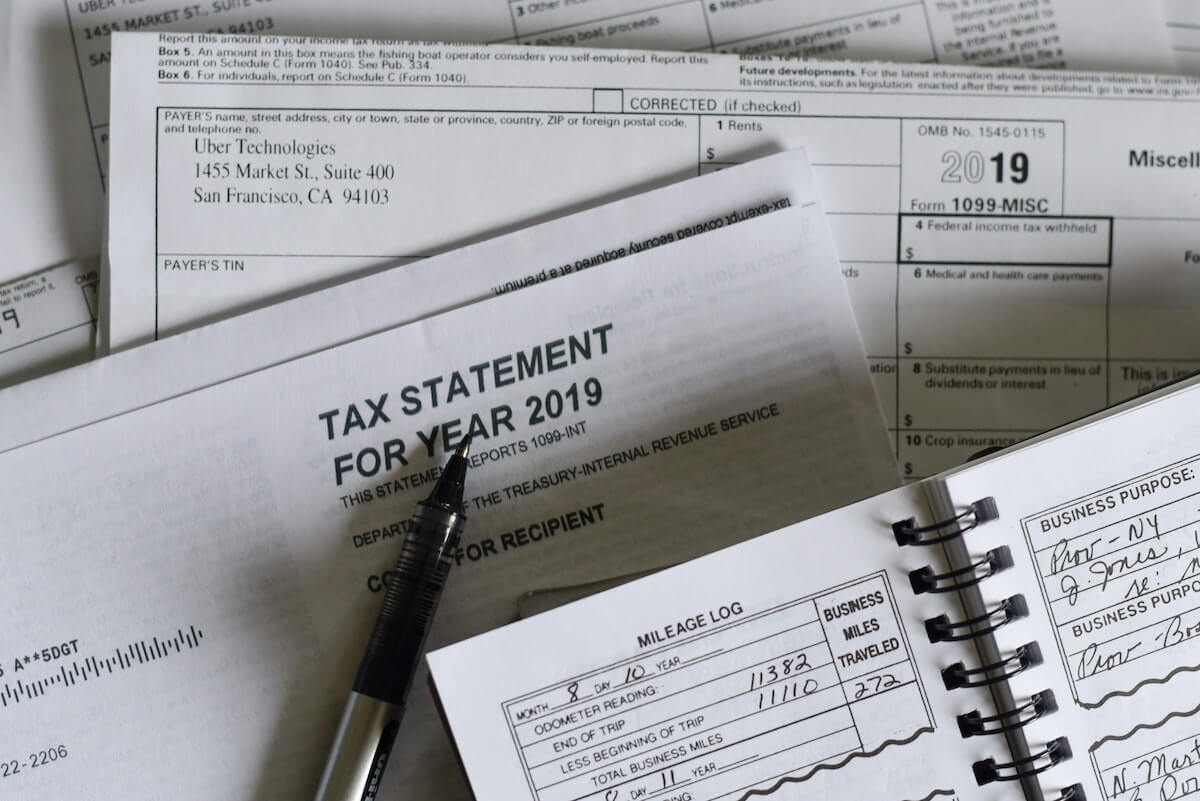1099 VS W2 Calculator Estimate Your Taxes (2024)
Last Updated: December 10, 2022 • 7 min read
Disclosure: This page may contain affiliate links and we may receive a commission through them, but this is at no additional cost to you. For more information, please read our privacy policy.

Everyone knows that tax laws are confusing. You need to understand how it works to make informed decisions about your own business. 1099 vs W2 calculator difference is a crucial decision for any company, especially if you want to be sure that you’re paying the right amount of taxes on each transaction.
1099 and W2 calculators are both tax estimating calculators. Both are used to determine how much you owe to the Internal Revenue Service (IRS). However, there are some subtle differences between the usage of the two.
In this article, we’ll talk about the differences in 1099 vs W2 calculator usage.
What Does the Tax Form 1099 Mean?
1099 tax form is for self-employed or independent contractors. This form is sent to independent contractors and the IRS every year. It contains information about their annual income and tax estimations.
Suppose you’re considered an independent contractor instead of being classified as an employee with benefits such as health insurance coverage. In that case, those costs will be paid directly by yourself after filing Schedule C at tax time each year via Form 1040NR if necessary. The self-employed individual has benefits that others do not. This includes on average a higher hourly rate, due to the extra taxes that they are responsible for. The good news is that there are tax deductions available like business expenses, home office space, and other expenses related to your side hustle. Consult with a skilled tax professional for tax advice at the beginning of the year to be able to influence your spending decisions as a self-employed worker.
What Does Tax Form W2 Mean?
Similarly, the W2 form is a wage and tax statement for employees who are not independent contractors. The W2 form is sent to employees and the IRS. It keeps track of the employee's wages and the tax cuts from their paycheck annually.
Employers withhold the tax amount from each employee’s paycheck and file them with IRS. If you’re an employee working under someone else, you don’t need to file your own payroll taxes. It’s the **employer’s responsibility. **

The Most Significant Difference Between 1099 and W-2 Employees Is Tax Filing
There are a few key differences between 1099 and W-2 employees.
1099 employees (who are independent contractors) pay their own taxes. If you’re an independent contractor, your employer won’t withhold taxes from your paycheck or file them with the IRS. You’ll have to estimate your taxes and file them with the IRS because no employer is involved.
This can be a lot for people who aren’t used to handling money on their own (or have never filed before).
In contrast, W2 employees have taxes withheld from their paychecks automatically by their employer. That’s why even if they don’t know what they owe at all times, they won’t miss out on any money! Your employer is responsible for filing your taxes and providing other benefits like insurance.
On the other hand, if you’re an employee who files taxes as part of your annual income tax return every year, then it’s up to you. You can decide whether or not there should be anything taken out of each paycheck before sending it off into Uncle Sam’s lap.

Employees Vs. Independent Contractors
Employees
Employees work under an employer. Generally, the employer controls the work schedule, procedure, and hours. The W-2 workers don’t have much of a say in the work process. They just work and get paid for their work along with other benefits. There are over 130 million W2 workers in the United States, so pretty much the majority of the workforce is classified as W2 workers.
Employees enter a project with an employment agreement and don’t control other areas of the project except for their expertise. Employers are responsible for raw materials, tools, and other arrangements. This is the same for small businesses or Fortune 500 companies, they are responsible for the equipment you need to complete your job.
As a W-2 employee, your employer withholds income taxes from your taxable income on your behalf. When you file your own taxes and claim these deductions, they’re added to your refund. You don’t need to worry about paying taxes when you file your return; all of the money goes directly into the government’s coffers. This applies to full-time employees as well as part-time employees.
If it’s not deducted from each paycheck before leaving the company (and sometimes even after), then no one else will know about that deduction. The wind clears until after filing season ends, and the refund shows up in the bank account or credit card bill—which might take several weeks if they’re paid by check rather than direct deposit into their account.

Independent Contractors
Independent contractors can work on projects of their choice and have more control. They choose how and when they work. Since they are independent, they take work on a contractual basis and decide the timeframe for it. This is frequently referred to as contract work. It means they can work on multiple projects simultaneously in different shifts. With the current work from home climate, I've heard of people being able to hold down two to three jobs using this approach. Generally, they are responsible for bringing the tools required and arranging everything to start working.
Unlike employees, independent contractors are responsible for setting aside money to pay their tax liability when they file their personal income tax returns. This is called self-employment tax (SE Tax) and is not something that a W2 employee has to worry about. It is a separate form of taxation that an individual, sole proprietorships or business must pay for any income earned from working as an employee or business owner. Normally as business owners, you must pay quarterly taxes on a quarterly basis.
Self-employment taxes are calculated based on the net earnings of your business: gross income minus operating expenses (including payroll) minus the cost of goods sold. The IRS requires you to report these amounts on Form 1040 Schedule C with Form 1040 Schedule C-EZ attached if you have both an EIN and W2 from your employer while you work for yourself—meaning there’s only one employer/employee relationship at this point in time!
What Happens If You Misclassify Workers?
Employees and independent contractors are still both workers. Here’s how misclassifying them affects an employer.
Employers are responsible for paying employees’ taxes and other benefits. So, if you misclassify them as independent contractors, you won’t pay the taxes and other benefits. Eventually, when the tax season ends, the IRS will knock on your door for any missing medicare taxes, payroll taxes, social security taxes, or anything else that was incorrect on your tax bill. This will end up in a higher rate of money paid to the IRS, so it is much better to correctly classify your employees.
Misclassifying workers can cost employers considerable money regarding outstanding tax debt and penalties. So, it’s crucial to know the workers’ status and act accordingly.
Final Thoughts
Being a W2 or 1099 employee has a very different tax implication when it comes to file your taxes. Each has pros and cons for your income, time freedom, and benefits.
Now that you know all about W2 vs 1099s it is a good idea to go and use a calculator. You can visit view the numbers to find one and see how the two different compensation strategies look for you. You can compare the W-2 forms and how to file as a 1099 employee (or business owner) and choose what works best for you.
As a general rule, this is not legal advice or tax advice. Consult with a professional in the field in your area.
